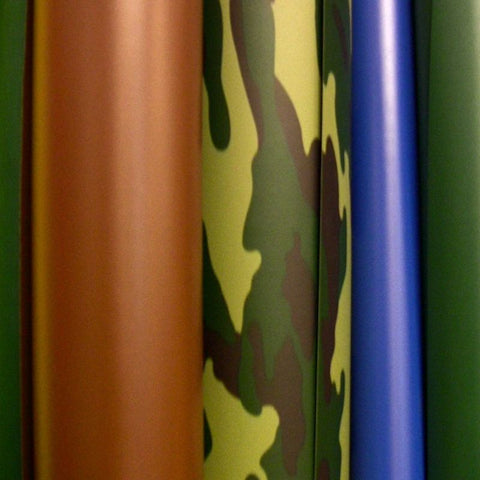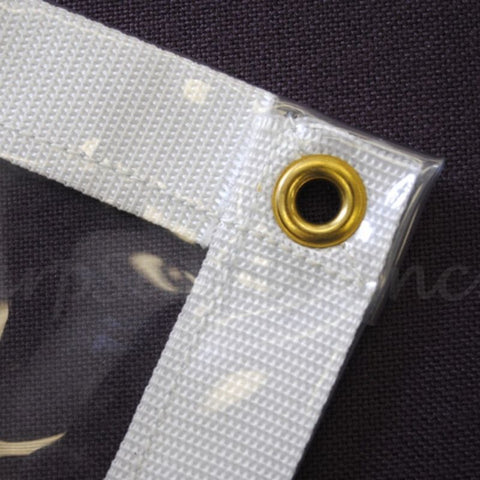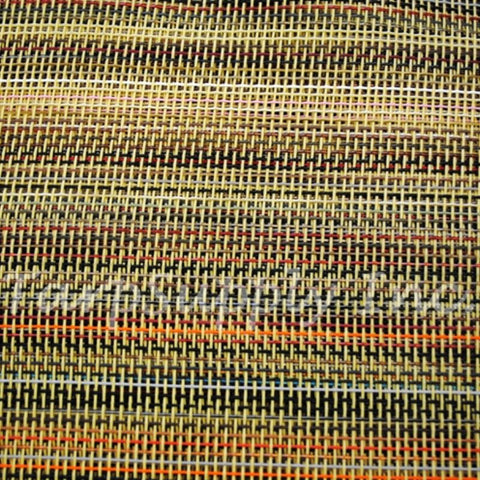Tarp Supply Inc.® Tarpaulins Size Guide
Purchasing a tarpaulin involves several considerations to ensure you select the right size and grade for your needs. To help you make an informed decision, we offer a series of tips and a comprehensive listing of our available covers, organized by size and duty. Here's a detailed guide to assist you in your selection process.
How are tarpaulins measured?

Measuring a tarpaulin correctly is essential for ensuring it meets the specific requirements of its intended use, whether that's covering a vehicle, serving as a protective layer for outdoor equipment, or being used as a temporary roofing solution. The process of measuring a tarpaulin involves understanding its dimensions, material, and the specific measurement techniques used by manufacturers. Here's a detailed look at how tarpaulins are measured:
Understanding Tarpaulin Dimensions
In the USA, tarpaulins are measured in feet and their size is denoted by their length and width. The dimensions of a tarpaulin determine its coverage area, making it crucial to select a size that adequately covers the intended space or objects.
Measurement Techniques
Standard Measurements
Cut Size: This is the initial size of the tarpaulin before any hems or seams are added. The final is about 6 inches or 3-5% shorter after edges are folded and hemmed.
Finished Size: This refers to the actual size of the tarpaulin after hems and seams have been sewn.
Measuring for Specific Applications
Covering Objects with a Tarpaulin
When measuring a tarpaulin for the purpose of covering objects, it's essential to accurately assess the object's dimensions, including length, width, and height. This is particularly important for objects with complex or irregular shapes, where standard rectangular or square tarps may not provide adequate coverage. Here are specific steps and considerations:
Measure the Object's Dimensions: Use a tape measure to find the length, width, and height of the object. For irregularly shaped items, consider the widest, tallest, and longest points to ensure the tarp will cover the entire object.
Account for Overhang: Add extra material on each side to allow for an overhang. This ensures that the object is fully protected, even if it's slightly moved or if the tarp is pulled tighter at one end. A good rule of thumb is to add at least 1-2 feet (30-60 cm) on each dimension for the overhang.
Consider the Tarp's Thickness and Durability: Depending on the object's location (outdoors, in a potentially harsh environment), the material's thickness and durability may be crucial. Heavier, more durable tarps can provide better protection but may be more challenging to handle and secure.
Securing the Tarp: Ensure you have enough material on the tarp's edges for securing it with ropes, ties, or weights. This is vital for outdoor applications where wind can lift the tarp, exposing the object.
Creating a Shelter or Canopy
When designing a shelter or canopy with tarpaulins, measurements go beyond the ground area to be covered. This application requires careful planning to ensure the structure provides adequate protection from weather elements while also being stable and secure. Here are detailed considerations:
Ground Area Coverage: Start by measuring the ground area that needs to be covered. This is your base measurement for determining the minimum size of the tarp.
Height and Slope: Decide on the height of the shelter or canopy and the slope of the roof. A steeper slope is better for water runoff but requires more material. Measure the height from the ground to the intended peak of the shelter.
Side Protection: If the shelter needs to protect against wind or sideways rain, include measurements for side coverings. Determine how far down the sides should be covered and add this to your total material requirement.
Extra Material for Anchoring and Tension: Tarps need to be secured firmly to withstand wind and weather. Include extra material along the edges for creating loops or pockets for poles, and for securing the tarp to the ground or adjacent structures.
Ventilation: For shelters intended for prolonged use, consider adding openings for ventilation to prevent condensation buildup. This may require additional material to create flaps that can be opened or closed as needed.
Material Considerations
The type of material can also affect the measurement and selection of a tarpaulin. Heavier, more durable materials like canvas or polyethylene may require larger seams and hems, slightly reducing the usable area of the tarp. Conversely, lighter materials may have less of a discrepancy between the cut size and finished size.
Poly Tarps Features

Material Features:
Lightweight and Durable: Poly tarps are made from polyethylene, making them light enough for easy handling yet durable enough to withstand various weather conditions.
Water-Resistant: They are naturally water-resistant, offering excellent protection against rain and moisture.
UV Protection: Many poly tarps are treated to be UV resistant, protecting items from sun damage.
Mildew and Rot Resistant: The material does not support the growth of mildew or rot, ensuring longevity even in damp conditions.
Versatility: Available in a range of thicknesses and strengths, poly tarps can be used for a variety of purposes, from lightweight covers to heavy-duty protection.
Considerations:
Temperature Sensitivity: They may become brittle in cold temperatures or soften in high heat.
Chemical Exposure: Some chemicals can degrade the material, reducing its lifespan.
Vinyl Tarps Features

Material Features:
Highly Durable: Vinyl tarps are known for their exceptional durability and strength, suitable for heavy-duty applications.
Waterproof: Unlike water-resistant materials, vinyl tarps are completely waterproof, making them ideal for applications where absolute moisture protection is needed.
UV and Abrasion Resistant: They offer excellent resistance to UV light and abrasion, ensuring long-term durability in harsh environmental conditions.
Chemical Resistance: Vinyl tarps can withstand exposure to many chemicals, oils, and acids.
Flame Retardant: Many vinyl tarps are treated to be flame retardant, adding an extra layer of safety.
Considerations:
Weight: They are heavier than other tarp materials, which may affect handling and transportation.
Cost: Typically, vinyl tarps are more expensive due to their superior durability and specialized features.
Canvas Tarps Features

Material Features:
Breathability: Canvas tarps allow air to circulate, reducing condensation and preventing rust on covered items.
Eco-Friendly: Made from natural cotton fibers, they are more environmentally friendly than synthetic tarps.
Water Resistance: While not waterproof, canvas tarps are treated to be water-resistant and are suitable for protecting against light to moderate moisture.
Durability: Canvas is strong and durable, capable of withstanding repeated use and wear.
Considerations:
Weight: Canvas tarps are heavier than poly tarps, which might be a consideration for transport and setup.
Maintenance: They may require more maintenance than synthetic tarps, including re-treatment for water resistance and protection against mildew.
Clear Tarps Features

Material Features:
Transparency: Clear tarps allow for visibility and light penetration, making them ideal for applications where you need to see through the cover.
Weather Resistance: These tarps are typically made from polyethylene or vinyl, offering good protection against weather elements.
UV Protection: Many clear tarps are treated for UV resistance, protecting items from sun damage while still allowing light through.
Versatility: Used in greenhouses, outdoor living spaces, or to protect outdoor merchandise without hiding it from view.
Considerations:
Scratching: The clear material can be prone to scratching, which may affect visibility over time.
Durability: While durable, they may not offer the same level of toughness as opaque, heavier-duty tarps for certain applications.
Mesh Tarps Features

Material Features:
Ventilation: The mesh design allows for excellent airflow, making them ideal for applications requiring ventilation.
Shade and Protection: Provides shade while still allowing some light through, perfect for nurseries, gardens, or as truck bed covers.
Lightweight: Mesh tarps are generally lightweight, facilitating easy handling and installation.
Debris Containment: Effective at containing debris while allowing air and water to pass through, used often on construction sites or for landscape trucks.
Considerations:
Limited Water Resistance: While they can block some moisture, mesh tarps are not waterproof and will allow water to pass through.
Durability: The open mesh fabric can be less durable than solid tarps when subjected to sharp objects or heavy loads.
What is the sizing of tarpaulin?
Standard Sizes
Tarpaulins come in a range of standard sizes, measured in feet or meters, depending on the region and the manufacturer. Common sizes include:
Small: 6'x8', 8'x10'
Medium: 10'x12', 12'x16'
Large: 16'x20', 20'x30'
Extra Large: 30'x40', 40'x60'
Tarp Supply Inc. has 100’ x 100’ size in stock.
These sizes are often nominal, meaning the actual dimensions of the tarp can be slightly less due to the hemming process where the edges are folded over and sewn or heat welded to reinforce them and add grommets for tying down the tarp.
Custom Sizes
For specific applications, custom-sized tarps can be manufactured to precise dimensions. This is particularly useful for industrial applications, large construction projects, or for covering objects with unusual shapes or sizes.
Thickness and Material Weight
The thickness of a tarpaulin, often measured in mils (1/1000th of an inch) or in grams per square meter (gsm), is a critical factor in its durability, weight, and suitability for various applications. Light-duty tarps might be around 5-6 mils thick or 120-180 gsm, suitable for short-term use or light protection. Heavy-duty tarps are thicker and more robust, often exceeding 16 mils or 200 gsm, designed for long-term use in harsh conditions.
Choosing the Right Size
Selecting the right size of tarpaulin depends on its intended use. For covering objects, it's important to measure the object and allow for enough extra material to fully cover the sides and secure the tarp. For applications like shelter or ground cover, consider the area that needs to be covered and any extra space needed for securing the edges.
Tarp Supply Inc.® Size Guide Catalog
Tarp Supply Inc.® Catalog
Don't let size selection challenges hold you back! Our expert team is ready to guide you through the process, ensuring you get a tarp that meets your specific requirements. With Tarp Supply Inc.®, you can trust in our commitment to quality, variety, and customer satisfaction.
Ready to find your perfect fit? Contact us today at 630-953-4700 or visit our website at https://www.tarpsupply.com/ to explore our collection. Don't settle for just any tarp—choose the right size with Tarp Supply Inc.® and enjoy the peace of mind that comes with a perfectly protected space. Your project deserves the best protection. Let us help you achieve it!